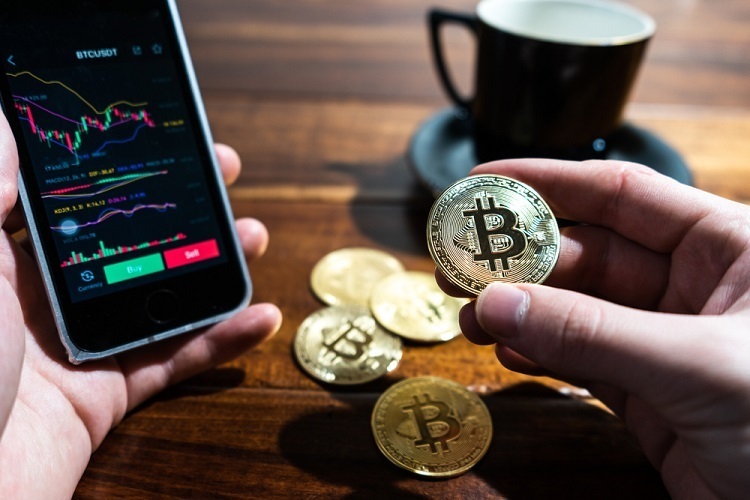Trading cryptocurrency on a mobile phone is not hard. However, following these tips will make it easier.
Table of Contents
#1 Avoid Long-Term Storage on an Exchange
It is vital to avoid long-term storage on an exchange. The cryptocurrency market is very volatile and can experience massive price swings in a day or even in a few hours. When you store your cryptocurrency on an exchange, you are giving the exchange control over your tokens. If that exchange were to get hacked or become insolvent, all of your funds would be gone forever.
To avoid this risk and keep your tokens safe from hacking attempts, it is best to store them in a personal wallet instead of an exchange wallet. You can also use a hardware wallet like Trezor if you want extra security for your crypto assets.
#2 Use the Right Wallet
The type of wallet you choose depends on your needs. Some wallets are secure, while others may not. If you’re looking to store large amounts of cryptocurrency, it is crucial to use a wallet that is easy to access and secure. You will also want to look into exchanges that offer the best rates for buying and selling cryptocurrencies on your phone.
When you buy cryptocurrency with a credit card, you will want your card info to be secure too. Getting the right type of wallet is crucial here as well.
#3 Check Your Internet Connection
One of the most common reasons people lose money in the stock market is because they don’t check their connection speed before executing a trade. This can be especially true when trading cryptocurrency on your phone, as even minor disruptions in connectivity can have major impacts on your ability to execute trades successfully. Before you get started with any kind of trading activity, make sure that:
- Your internet connection speed is fast enough to handle the amount of data transfer required by your chosen exchange platform (and so that it doesn’t drop during peak usage hours).
- You’re connected to Wi-Fi and not cellular data if at all possible (this means checking if this option is available).
#4 Protect Your Phone
Get a screen protector. You wouldn’t put your car windshield through the wash without putting it in the protective plastic bag, would you? The same goes for your phone screen: A screen protector will keep scratches from happening and save you from having to buy a new phone too soon.
Get a case that protects both sides of your smartphone. If you have an iPhone, some cases can help protect both sides of it—the backside as well as the front side of it—from damage like cracks or dents in case it gets dropped on the ground.
Add another layer of security by locking your phone with a PIN code and fingerprint access. If someone steals your device, they won’t be able to use it without knowing either one (or both) of these things first!
Protecting data on devices connected to public Wi-Fi networks is just as important as protecting them via cellular networks. If someone were able to access files stored within apps or browsers while connected through public hotspots then those hackers could follow their transactions back home once again using some type of application called “Rules.” It connects people based upon common interests such as trading cryptocurrencies together locally without having ever met beforehand.
#5 Invest What You Can Afford to Lose
It is crucial to keep your money in perspective. If you’re trying to get rich quickly, cryptocurrency trading isn’t the place to be. It is best to treat it as a hobby and only invest what you can afford to lose if things don’t pan out as planned. To find out more about the cheapest Cryptos you should invest in, visit this website:
#6 Do Not Trade on the Margin
Margin trading, or leveraged trading, can be a powerful tool in the right hands, but it’s risky and should only be used by experienced traders. If you’re just starting with cryptocurrency investment, it’s best to avoid margin trading altogether until you’ve gained some experience and have honed your skills.
#7 Know Your Limits
When buying cryptocurrency, it is vital to know the difference between a stop order and a limit order because the two work differently from each other. A stop order is an order that gives you more flexibility in terms of where you want to place it relative to the current market price, while limit orders allow you to set specific price points at which you want your buy or sell orders executed within the market environment.
For example: If Bitcoin (BTC) goes up by 100%, then its value will double from $10,000 per BTC ($10k per BTC) at one point in time until another point in time later down the road. If Ethereum (ETH) doubles its value during this same period then both ETH prices would rise but not necessarily double up completely like they would have with BTC instead!
#8 Use Price Alerts Notifications
Price alerts are a great way to monitor the price of a coin.
Let’s say you own some Bitcoin, and you want to know whenever it hits a certain price. You can set up an alert that sends you an email or text message when BTC hits your desired level. That way, if the price of BTC drops below your target value, you’ll get an alert so that you can sell before it falls further.
Similarly, if the value rises above your target, then you’ll receive another alert telling you when would be a good time to sell before the value starts dropping again (assuming there’s some other factor like market volatility).
So, feel free to trade crypto on your phone and stick to these tips for maximum effectiveness.

